
Photo by Beazy on Unsplash
Whether it’s a spare room, the middle of your living room, a converted closet space or just one end of the kitchen table, whatever area you’ve carved out for working from home has likely been seeing a whole lot more action lately. For many of us, the line between home and office might now be blurred forever, and that can have a lot to do with optimizing your designated home office space to feel more welcoming and productive. There’s a lot more to it than access to Wi-Fi, a power strip and some office equipment (though don’t forget those things).
In that spirit, allow us to offer a few hints for making your home-office cubbyhole a little more comfy.
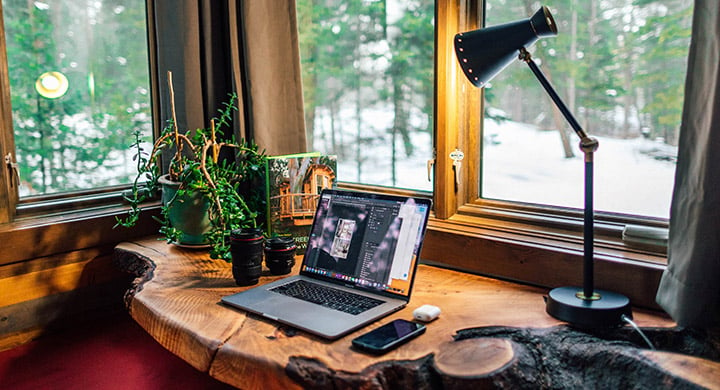
Photo by Roberto Nickson on Unsplash
1. Always look on the bright side of light.
When creating a home-office space, it helps to think about what works or doesn’t work about your office-office. Light is a great place to start, and natural light is the way to go.
If normally you work in an office that’s just a windowless interior lit with fluorescent tubes, you know exactly how deadly that can be for your spirit. Remember that dank basement area where your parents stashed their desk and filing cabinet?
Now that you can choose your own version of a corner office, make sunshine a priority. It’s not just nice; it’s science.
A recent study found that workers in daylit offices reported a drop in symptoms of eyestrain, headaches and blurred vision, all of which can detract from productivity.
IMPORTANT NOTE: It also helps if you can open your windows for a flow of cool, fresh air. The warmth of sunshine is wonderful, but unfortunately, it can also induce drowsiness. And while afternoon catnaps are heavenly, they do have a tendency to bring work to a screeching halt.
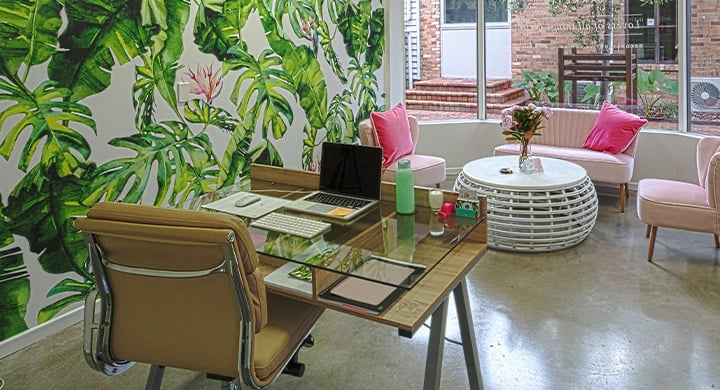
Photo by BeKonstructive Marketing on Unsplash
2. Invite plant life into your work life.
Plants, in any setting, are quite simply a good idea. They may improve indoor air quality by absorbing formaldehyde, which may help mitigate the harmful effects of Sick Building Syndrome. But science has plenty more to offer regarding the presence of plants and our general well-being and state of mind. Studies show plants can help us stay productive, boost creativity and reduce stress.
If nothing else, plants give us someone to talk to while we work alone at home. Particularly helpful if your landlord doesn’t allow pets.
3. Don’t forget fur babies.
Pets — with fur, fins or otherwise — are a boon to any workplace, but especially when you work from home. For starters, your home is their home, too. And because you’re already well aware of the pet policy in your home workplace, you won’t need to make any less-than-ideal concessions, like keeping them leashed to your desk all day.
The benefits of mixing pets with work are myriad, adding quality to your life and your pet’s life as well. Having pets close by helps relieve worry about their well-being, which allows you to be more productive. The added companionship makes for a happy pet and also encourages spontaneous break/playtime. Not to mention you save money on pet care.
One more great benefit of pets in your home workplace: It gives us an excuse to remind you about Pet ParentSM Coverage from Toggle®, which includes coverage for up to $500 in veterinary care if your pet is injured as a result of a covered loss to property (in select states), $100,000 for a covered injury caused by your pets to another person who is not insured, up to $500 in pet boarding costs if a covered loss or damage makes your residence temporarily unfit to live in and up to $500 for damage to your residence caused by your pet over and above your security deposit. Definitely check it out.
4. Keep it clean, folks.
You’ve probably read somewhere that Einstein had a very cluttered desk. That may well be true, but let’s face it: Most of us aren’t Einstein.
The truth is, when your workspace is a mess, it can affect you and can even have negative effects on our eating choices and sleep.
Logistically speaking, you not only lose precious minutes of productivity every time you go searching for a piece of paper in a messy filing cabinet or a digital file on your computer screen, but you also break whatever cognitive flow you may have been enjoying. Even something as simple as checking an incoming email can result in lost momentum.
So whether a cluttered desk is a sign of your genius or not, it’s got nothing to do with efficiency. Just think how much more Einstein might’ve accomplished if he just took some time to tidy up.
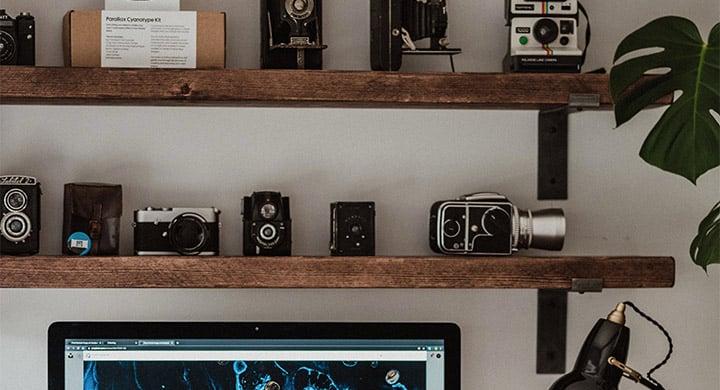
Photo by Annie Spratt on Unsplash
5. A good chair: Choose it (or maybe, lose it).
Unfortunately, office chairs are like beds — we spend too much of our lives in them. So when choosing one for your home office, think of it as an investment in your spinal cord. Some factors to consider:
- Lumbar (lower back) support. Preferably adjustable. Lumbar support may reduce back strain that may lead to chronic pain.
- All the adjustability. Everybody’s body is different, and while kitchen chairs aren’t adjustable, they also probably weren’t designed to be sat in for hours a day. Choose a chair with adjustable arm height and width, seat-back height and width, and seat and back angle at least. Then spend some time dialing it all in.
- Wheel base. Do you have carpet in your office? Be sure to choose a chair with wheels designed for that.
- Swivel base. Chairs without swivel may cause strain over time as you move unnaturally to access different parts of your desk.
- Or maybe you’re a standup human being? Truth is, sitting is the worst. Humans weren’t designed for it. Sitting for too long may increase the risk of weight gain, bad posture and myriad chronic pains. A standing desk may take some getting used to but may benefit some people.
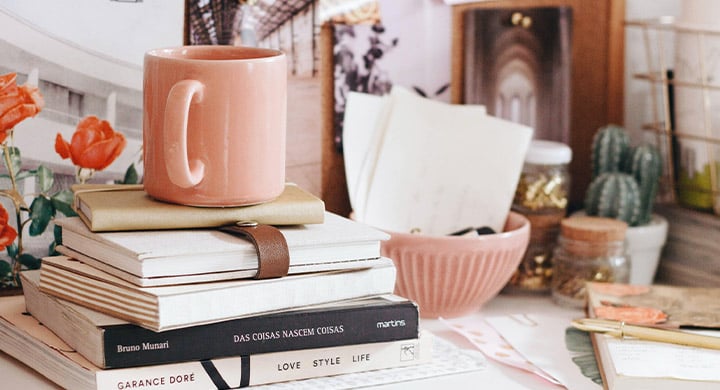
Photo by Ella Jardim on Unsplash
6. File this under “Filing Cabinets.”
In an increasingly paperless world, you’d think filing cabinets would be falling out of use and favor. But for plenty of things, hard copies are still the gold standard, and the ubiquitous filing cabinet is as useful as ever. Unfortunately, organizing one is still a bit of a trick. If you don’t set out with a plan for accessing files in the future, all your good intentions might pave the way straight to a hellacious disaster.
But filers, fear not! We’ve got a plan for your important papers. So read on.
- Buy a filing cabinet (obviously). When it comes to filing cabinets, there’s a surprising amount of inexpensive ones on the market. Invest in one that’s not going to fall apart because a lot of them will. Bonus tip: Wheels are a good idea. Cabinets start out empty and light, but a full one is another story, and those wheels will make life a lot easier down the road.
- Start with a system. Remember, you’re creating a system for yourself in the future. It will need to serve you for years. And if heaven forbid, something should happen to you, it helps if your system makes sense to anyone else who might need access to your files as well — your spouse, parents, business partners, etc.
Alphabetical order is still the simplest system, and if you’re careful to maintain it, it won’t ever pose a mystery. But a system can also reflect geographical region, order of priority, chronology or subject matter. It depends on what your files contain, but the important thing is that once you choose a system, you stick with it.
- Make a list. Before you commit file names to the file folders, list them all on a piece of paper. You might find that one of the file categories fits more logically as a subset of another file. You might find listing the names of companies billing you (“Acme Energy”) more useful than the names of what those bills are (“Electric Bill”). Or vice versa.
- The name game. Next step is naming the files. Be clear, concise and not cute or coded. Again, this is all for future you, and future you might forget that inside filing-cabinet joke that present-day you thought was so hilarious. Keep it simple, silly.
- Miscellaneous, schmiscellaneous. Got a folder labeled “miscellaneous”? Get rid of it. Trust us; just trash it. “Miscellaneous” is like filing-cabinet purgatory — it’s not the trash can, but it might as well be because chances are you’ll never need those items again, or you’ll never find them again.
It’s not your fault. It’s just that shoving stuff into the “miscellaneous” file is way too easy to default to when you’re in a hurry to get filing over with. A little discipline now will pay filing dividends down the road.
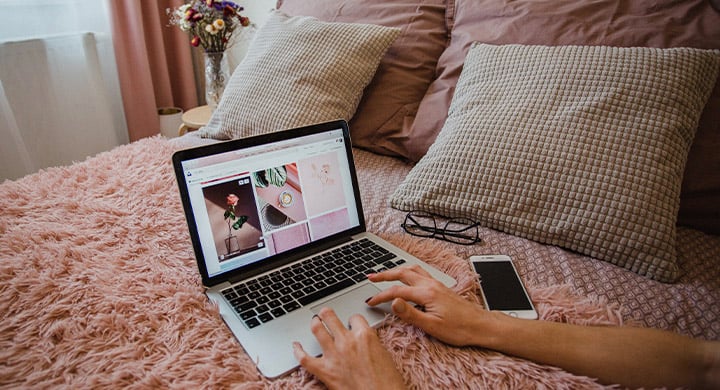
Photo by Marta Filipczyk on Unsplash
7. Oh, one more renters-insurance-related thing...
Working from home isn’t for everyone, but for some, it’s everything. In fact, the WFH bug has been known to result in episodes of side-gigging. If this happens to you, you might want to get renters insurance from Toggle® with Side Hustle®. This insurance is like a sidecar to your day job. When you clock out, it clocks in. Weekend gigs, passion projects. Whatever keeps the dough rolling when you’re not in the office, Side Hustle® keeps it on track, helping to protect any pricey covered hustle-related equipment you can’t afford to lose and other covered losses related to earning extra coin up to the limits for this coverage.

Photo by Mateus Campos Felipe on Unsplash
Hopefully, all this helps take a little of the WTF out of your WFH experience. If 2020 has taught the world anything, it’s that we can always find new ways to make work work for everyone. Once upon a time, when the internet was first created, the dream of working from a hammock on the beach seemed within our grasp. Now, maybe it’s finally here.
Now that you've upgraded your home office, check out this blog for more adulting tips.
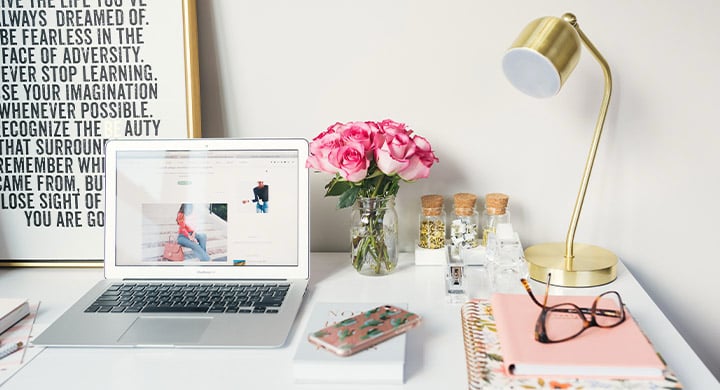
Photo by Arnel Hasanovic on Unsplash








